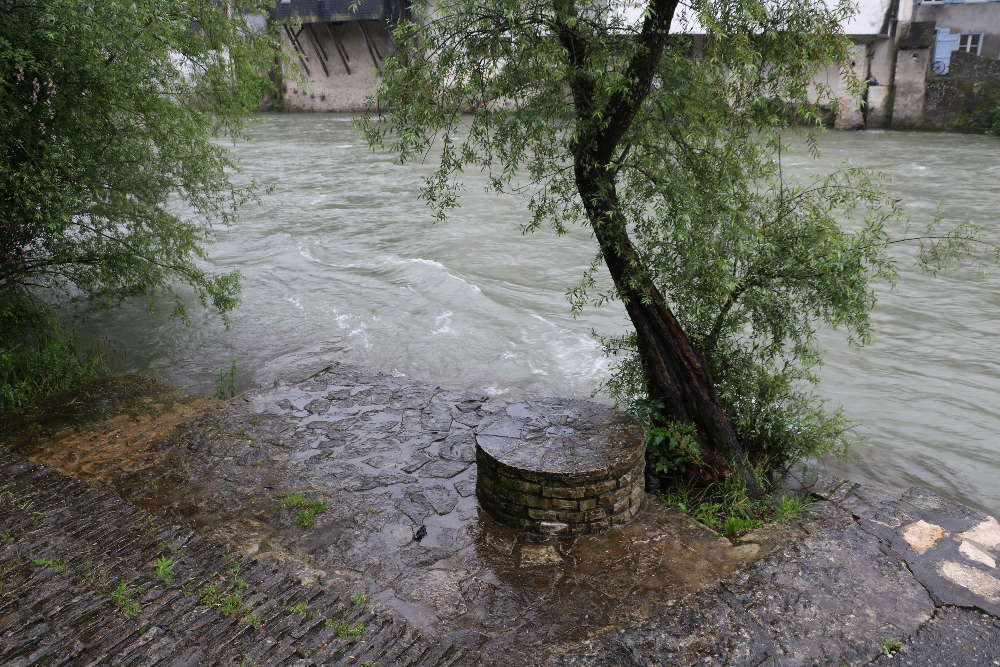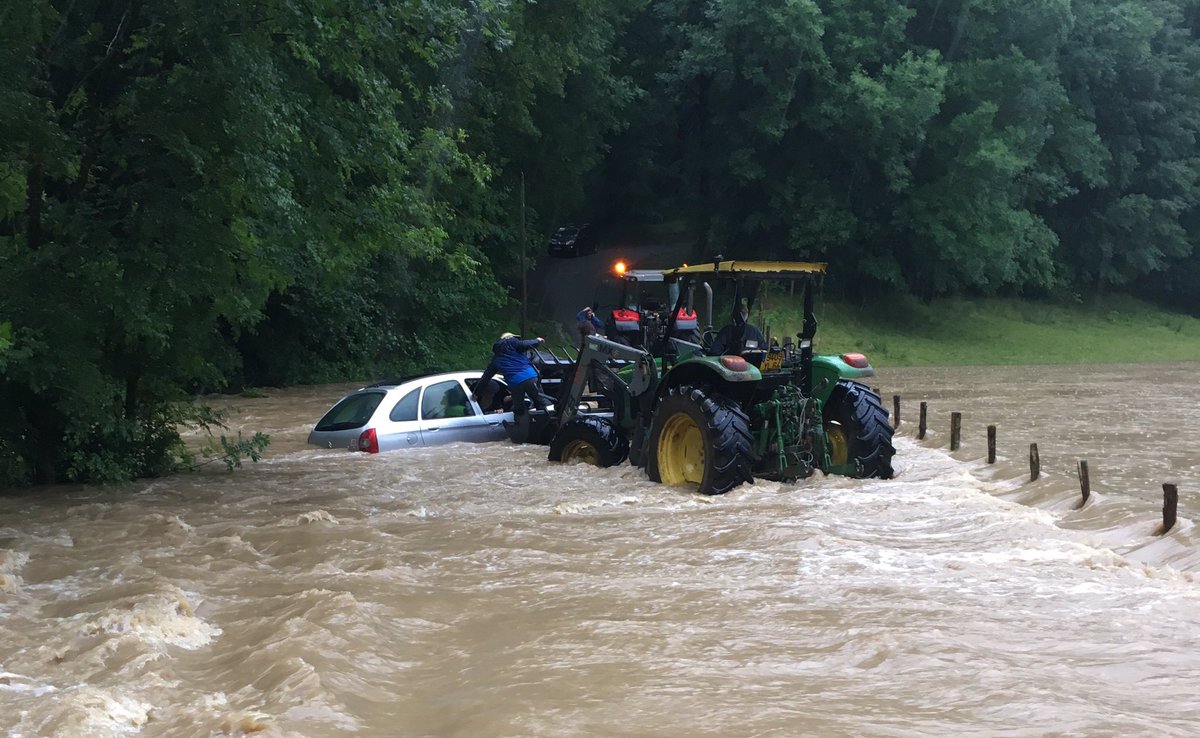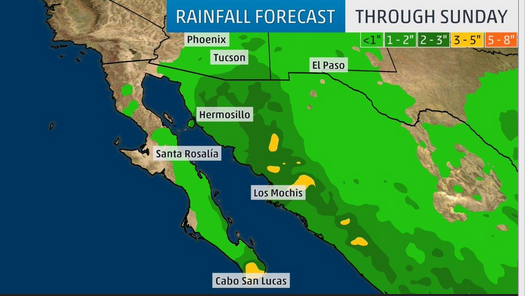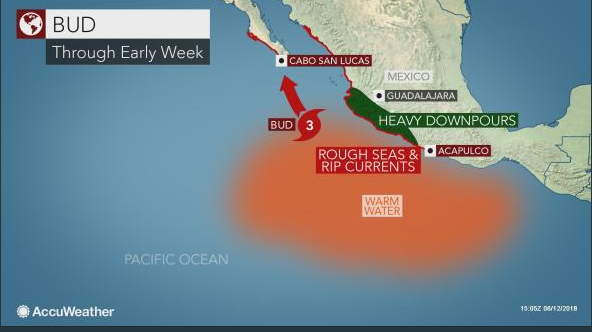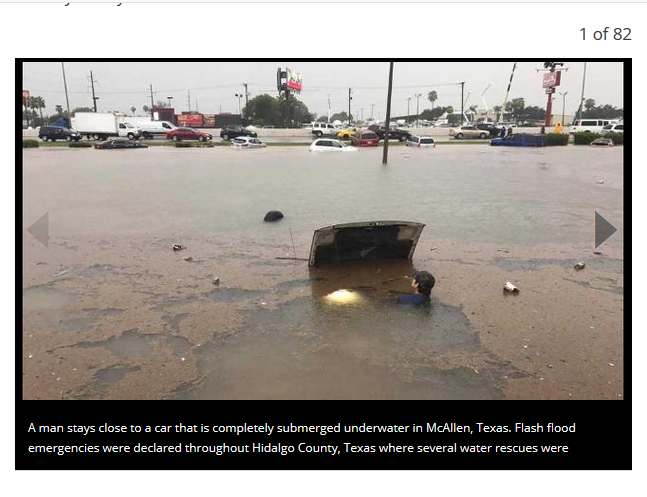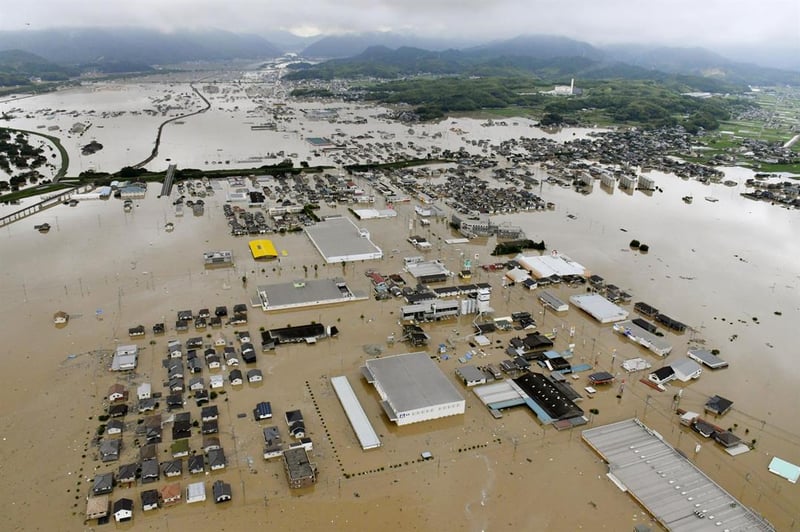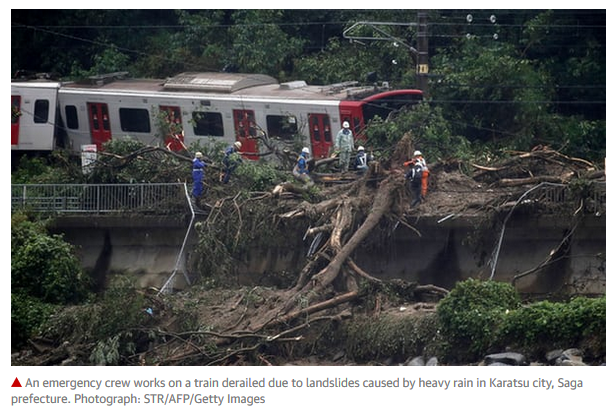angelburst29
The Living Force
Over 800,000 Kenyans have been affected by devastating floods and rains in Kenya, the United Nations Office for the Coordination of Humanitarian Affairs (OCHA) said in a statement.
08.06.2018 - UN: Disastrous Flooding Affects Thousands in Kenya
UN: Disastrous Flooding Affects Thousands in Kenya
"The death toll from heavy rains and flooding in Kenya has risen to 186, and an estimated 800,000 people have been affected, according to the Kenya Red Cross Society (KRCS). This includes an estimated 300,000 who have been displaced and nearly 100 injured, although many of those displaced have begun to return home," the statement read on Thursday.
About 18,725 children affected by the disaster will require assistance to ensure their physical and psychosocial well-being, the document added.
Over 739 schools were closed temporarily due to major infrastructure damage caused by the floods or because they are housing displaced persons. The situation led to the disruption in learning for over 100,000 children, the OCHA pointed out.
Mudslides resulted in multiple roads blocked and motorists stranded. Moreover, the landslides also destroyed houses in central Kenya, forcing people to evacuate from the area.
The OCHA expressed concern over the increased risk of health emergencies, including cholera outbreaks, due to poor sanitation and lack of clean water in the areas damaged by the floods.
The document added, citing the Kenyan Health Ministry, that as of Monday, cholera cases had been reported in eight counties, including Elgeyo Marakwet, Garissa, Isiolo, Kiambu, Nairobi, Tharaka Nithi, Turkana and West Pokot.
The UN agency suggested that the cases of malaria could also increase in the affected areas due to continued rainfall.
Kenya has been affected by heavy rainfall since March. According to the Kenya Meteorological Department data, in some areas of the country, seasonal rainfall between March and May was the highest recorded over the past 50 years.
Also of note:
04.04.2018 - Huge Fissure opens up in Kenya, Could Signal Continental Split (Video)
WATCH: Huge Fissure Opens in Kenya, Could Signal Continental Split
Overnight on Monday, a 20-meter-crack in the Earth emerged in an area west of the Kenyan capital of Nairobi. The opening of the mysterious crack, which is continuing to grow, shook the ground in the area and caused part of the Nairobi-Narok highway to collapse.
Smithsonian Institution geologist Ben Andrews says the crack was caused by movement of the Earth's tectonic plates, parts of the Earth's crust.
"We're seeing a crack that in all likelihood formed over many thousands of years or hundreds of thousands of years," said Andrews, CBS reported.
The Nubian tectonic plate covers almost the entire African continent while the Somali plate includes half of the coast of Africa, from the Gulf of Aden in the north to Durban, South Africa, in the south. These two plates are pulling away from each other at a rate of about 2.5 cm a year on average. This means that the shifting process could cause Africa to split in two — though not for some 50 million years — resulting in Somalia, Kenya, Tanzania and half of Ethiopia moving away from the rest of the continent. These countries are located in an area referred to by geologists as the Great Rift Valley.
The current rift appears to be in the general area of the border of the the Nubian and Somali plates.
Other geologists, however, like Wendy Bohon, have far less world-shattering explanations: she believes the crack was created simply by heavy rains.
"I think it's an Earth fissure, the same sort of thing that you see in Arizona after heavy rain storms. They're the result of heavier torrential rains that come and wash away large portions of the dirt in the ground. To me it looks pretty cut and dry. It wasn't a result of the tectonics, it was the result of the weather," Bohon told CBS News.
The outermost part of the Earth, called the lithosphere, is made up of tectonic plates that drift along the surface at different speeds. When they collide or separate, they cause earthquakes; over time, the same processes form rifts, ridges, mountains and chasms. Scientists believe these plates slide slowly across the liquid surface of the Earth's mantle, which is made of ultra-hot liquid rock beginning around 80 to 190 kilometers beneath the surface.
08.06.2018 - UN: Disastrous Flooding Affects Thousands in Kenya
UN: Disastrous Flooding Affects Thousands in Kenya
"The death toll from heavy rains and flooding in Kenya has risen to 186, and an estimated 800,000 people have been affected, according to the Kenya Red Cross Society (KRCS). This includes an estimated 300,000 who have been displaced and nearly 100 injured, although many of those displaced have begun to return home," the statement read on Thursday.
About 18,725 children affected by the disaster will require assistance to ensure their physical and psychosocial well-being, the document added.
Over 739 schools were closed temporarily due to major infrastructure damage caused by the floods or because they are housing displaced persons. The situation led to the disruption in learning for over 100,000 children, the OCHA pointed out.
Mudslides resulted in multiple roads blocked and motorists stranded. Moreover, the landslides also destroyed houses in central Kenya, forcing people to evacuate from the area.
The OCHA expressed concern over the increased risk of health emergencies, including cholera outbreaks, due to poor sanitation and lack of clean water in the areas damaged by the floods.
The document added, citing the Kenyan Health Ministry, that as of Monday, cholera cases had been reported in eight counties, including Elgeyo Marakwet, Garissa, Isiolo, Kiambu, Nairobi, Tharaka Nithi, Turkana and West Pokot.
The UN agency suggested that the cases of malaria could also increase in the affected areas due to continued rainfall.
Kenya has been affected by heavy rainfall since March. According to the Kenya Meteorological Department data, in some areas of the country, seasonal rainfall between March and May was the highest recorded over the past 50 years.
Also of note:
04.04.2018 - Huge Fissure opens up in Kenya, Could Signal Continental Split (Video)
WATCH: Huge Fissure Opens in Kenya, Could Signal Continental Split
Overnight on Monday, a 20-meter-crack in the Earth emerged in an area west of the Kenyan capital of Nairobi. The opening of the mysterious crack, which is continuing to grow, shook the ground in the area and caused part of the Nairobi-Narok highway to collapse.
Smithsonian Institution geologist Ben Andrews says the crack was caused by movement of the Earth's tectonic plates, parts of the Earth's crust.
"We're seeing a crack that in all likelihood formed over many thousands of years or hundreds of thousands of years," said Andrews, CBS reported.
The Nubian tectonic plate covers almost the entire African continent while the Somali plate includes half of the coast of Africa, from the Gulf of Aden in the north to Durban, South Africa, in the south. These two plates are pulling away from each other at a rate of about 2.5 cm a year on average. This means that the shifting process could cause Africa to split in two — though not for some 50 million years — resulting in Somalia, Kenya, Tanzania and half of Ethiopia moving away from the rest of the continent. These countries are located in an area referred to by geologists as the Great Rift Valley.
The current rift appears to be in the general area of the border of the the Nubian and Somali plates.
Other geologists, however, like Wendy Bohon, have far less world-shattering explanations: she believes the crack was created simply by heavy rains.
"I think it's an Earth fissure, the same sort of thing that you see in Arizona after heavy rain storms. They're the result of heavier torrential rains that come and wash away large portions of the dirt in the ground. To me it looks pretty cut and dry. It wasn't a result of the tectonics, it was the result of the weather," Bohon told CBS News.
The outermost part of the Earth, called the lithosphere, is made up of tectonic plates that drift along the surface at different speeds. When they collide or separate, they cause earthquakes; over time, the same processes form rifts, ridges, mountains and chasms. Scientists believe these plates slide slowly across the liquid surface of the Earth's mantle, which is made of ultra-hot liquid rock beginning around 80 to 190 kilometers beneath the surface.

